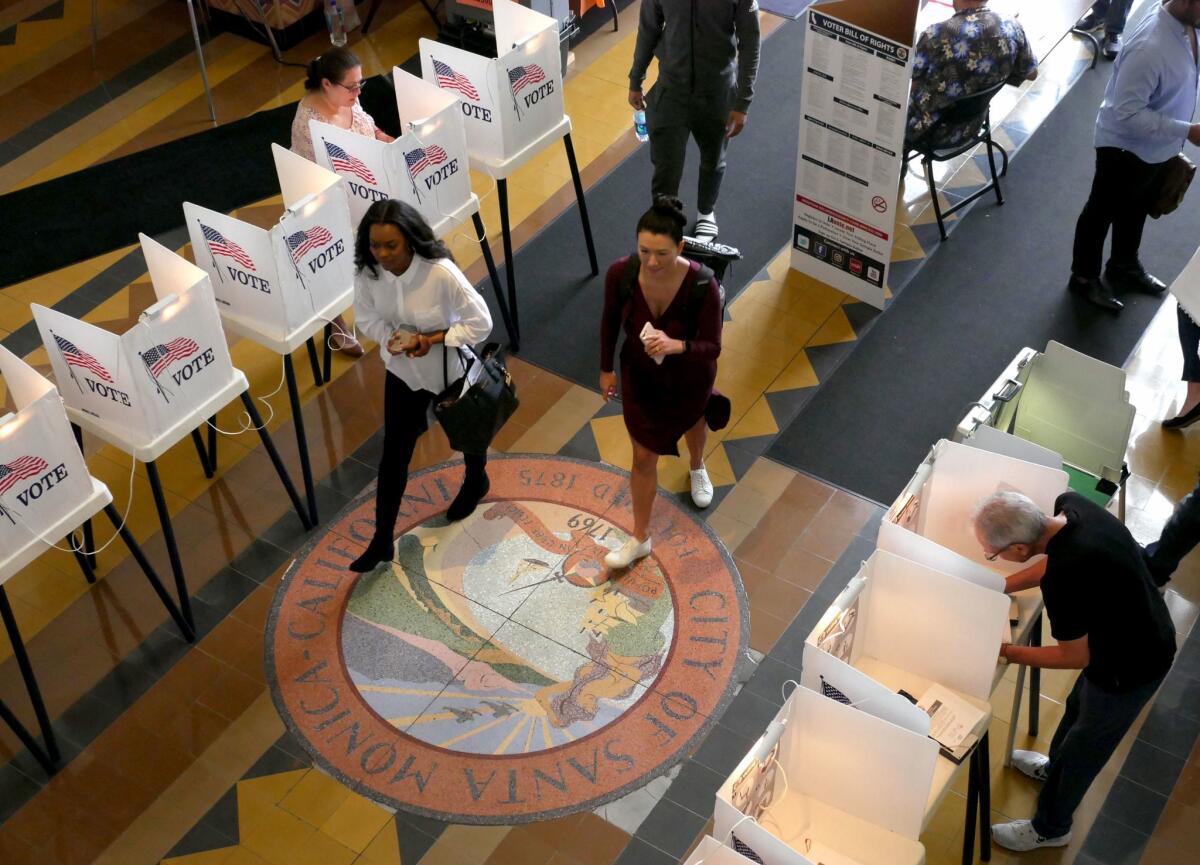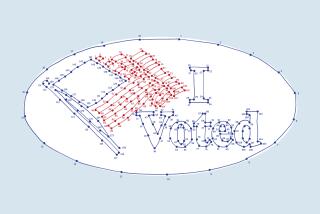The trouble with California’s early primaries

- Share via
California had the right idea when it moved its presidential primaries from June to March. The nation’s most populous state needs to be relevant in the process of choosing the nominees for the two major political parties.
But California, unfortunately, didn’t only switch its presidential primary. It also moved its state and congressional elections up to March 3 as well. This earlier date could make existing problems with state elections worse.
For the record:
5:44 p.m. Feb. 13, 2020An earlier version of this article said the Washington primary would be held on March 3. It will be held on March 10.
In making this switch, California turned almost the entire year of 2020 into one endless election. The March voting is only the first round of state and congressional elections. The top two vote-getters in the March elections, regardless of party affiliation, will advance to the November election — which means that candidates will be campaigning against each other for eight months.
Elections, even top-two runoff elections, don’t have to work like this.
In 1958, Charles de Gaulle insisted on this kind of voting in the founding of France’s Fifth Republic. The French process is straightforward — if no candidate wins the support of a majority of voters, there is a runoff among the top two vote winners. Voters whose favorite candidate did not emerge from the first round tend to move from the political margins toward second-choice candidates in the center in the runoff election.
But the French don’t run this process nearly as slowly as California. France conducts runoff elections a few weeks after the first round. For example, the first round in the 2017 French presidential election was held on April 23 with the runoff on May 7. California, in addition to allowing seven months and three weeks between rounds, requires a runoff even if one candidate gets a majority in the first round.
There’s no reason to have so much politicking, fundraising and campaigning when there are only two candidates in a race.
In the 2018 California governor’s race, Gavin Newsom won the first round in June, with Republican John Cox finishing second. Newsom wouldn’t agree to the voluntary spending limit for the governor’s race ($14.5 million) and so couldn’t get a statement in the official voter’s guide. Cox did make a statement in the guide saying, “I wasn’t supposed to make it into this run-off for Governor.” It didn’t much matter, though. Newsom waltzed to victory in the November election with a minimum of debate.
In 2016, two Democrats running for the U.S. Senate made it into the top-two runoff. But this intraparty battle did not make for an engaging election because voters faced a choice between two candidates espousing similar policy proposals. Many Californians didn’t even bother to vote in that race; there were nearly 2 million fewer votes cast in the Senate race than in the presidential race in California. Republican and conservative voters simply skipped this nonchoice on the ballot. The same undervote effect happened in the 2018 Senate race, when the two contenders were Democrats, compared with the gubernatorial race.
California’s electoral structure has the effect of shutting out some voters in ways that we would otherwise criticize in other countries. The Council of Europe, for instance, has faulted Russia’s Duma elections for being dominated by one party, United Russia, which does not always participate in debates. This demonstrates “a certain disregard for voters and the other political forces, as well as an unwillingness to explain its political platform,” the Council of Europe said.
Other states with similar top-two runoff systems have avoided some of California’s mistakes. Washington, where I live, also has runoff elections and will hold its presidential primary on March 10. But it did not move up other elections to March. The first round of state and congressional elections will take place in August — which leaves 13 weeks between the first round and the runoff.
For the 2022 election, California voters should demand that the first round for state and congressional elections be moved back to June. They might even consider pushing those primaries to August. That would leave less time for pointless one-against-one campaigning.
Better yet, voters should be discussing other reforms such as a unicameral legislature, ranked choice voting and proportional representation — ways that could truly modernize the electoral system.
Krist Novoselic is the former chairman of FairVote. He played bass in Nirvana.
More to Read
A cure for the common opinion
Get thought-provoking perspectives with our weekly newsletter.
You may occasionally receive promotional content from the Los Angeles Times.






